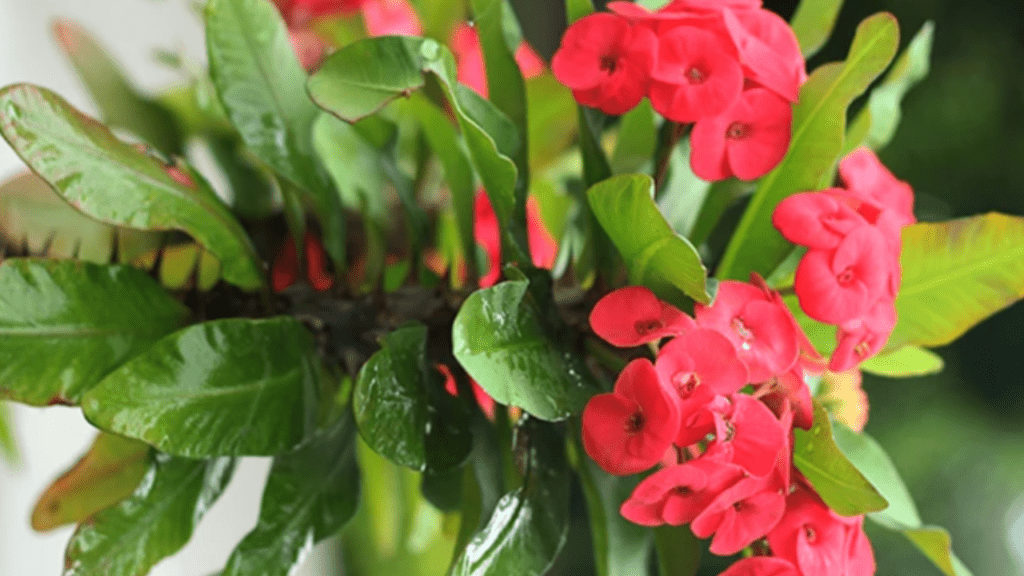
How to Grow a Thriving Euphorbia Plant Indoors
Euphorbia plants are a beautiful and unique addition to any indoor plant collection. With their striking appearance and low maintenance requirements, they are a popular choice for many plant enthusiasts. In this post, we will walk you through the steps to successfully grow and care for a Euphorbia plant indoors, including the best lighting, watering, and soil conditions to ensure your plant thrives and stays healthy. Whether you’re a seasoned plant parent or a beginner, this guide will provide you with the knowledge and tips you need to grow a thriving Euphorbia plant in your home.
Table of Contents
ToggleUnderstanding Euphorbia Plants
Is important for successfully growing and caring for them. Euphorbia plants, also known as spurge, are a diverse group of flowering plants that come in a wide range of shapes and sizes. They are known for their unique appearance and low maintenance requirements, making them a popular choice for indoor plant enthusiasts.
When it comes to growing Euphorbia plants indoors, it’s important to provide them with the right growing conditions. They thrive in bright, indirect light, so placing them near a window where they can receive plenty of natural light is ideal. It’s important to avoid direct sunlight, as this can scorch the plant’s leaves.
When it comes to watering, Euphorbia plants prefer to dry out between waterings. Overwatering can lead to root rot, so it’s important to allow the soil to dry out before watering again. In terms of soil, a well-draining potting mix is essential to prevent waterlogged roots.
One thing to keep in mind when caring for Euphorbia plants is their toxic sap, which can cause skin irritation and be harmful if ingested. It’s important to handle them with care and keep them out of reach of children and pets.
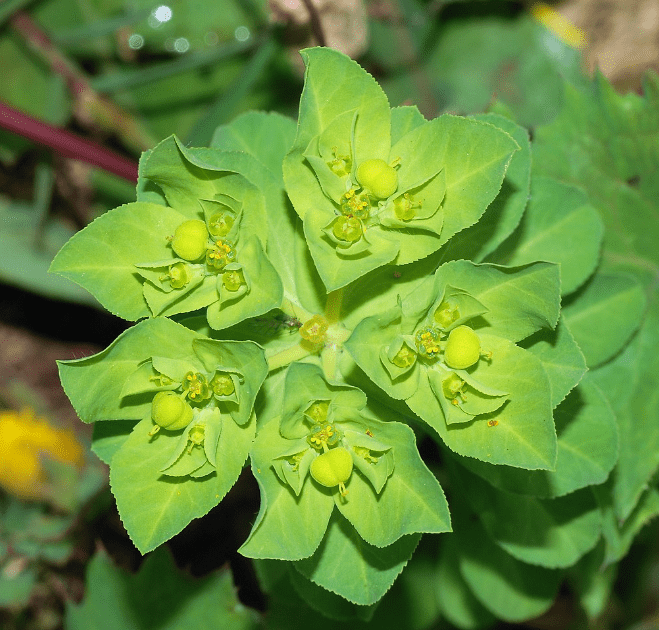
By understanding the specific needs of Euphorbia plants and providing them with the right growing conditions, you can enjoy the beauty of these unique plants in your home. With the proper care, your Euphorbia plant can thrive and bring a touch of natural beauty to your indoor space.
Ideal Indoor Conditions for Euphorbia
Light Requirements
Importance of bright, indirect light.
Euphorbia plants thrive in bright, indirect light. It’s important to place them in a location where they can receive plenty of natural light, but not direct sunlight. Direct sunlight can be too intense for Euphorbia plants and may cause their leaves to burn. Bright, indirect light helps to keep the plant healthy and encourages it to produce vibrant, colorful blooms. If you notice that your Euphorbia plant is not receiving enough light, you can consider using a grow light to supplement its light needs. Providing the right amount of light is essential for the overall health and growth of Euphorbia plants.
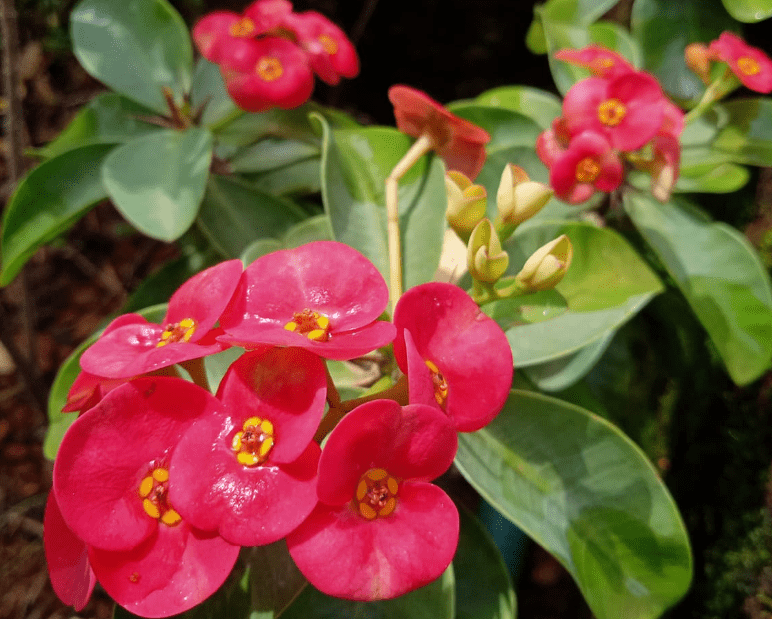
Best indoor locations for optimal sunlight.
When it comes to providing optimal sunlight for indoor plants like Euphorbia, it’s important to consider the light requirements. Euphorbia plants thrive in bright, indirect light, so it’s best to place them in a location where they can receive plenty of natural light, but not direct sunlight. Direct sunlight can be too intense for Euphorbia plants and may cause their leaves to burn. Bright, indirect light helps to keep the plant healthy and encourages it to produce vibrant, colorful blooms. If you notice that your Euphorbia plant is not receiving enough light, you can consider using a grow light to supplement its light needs. Providing the right amount of light is essential for the overall health and growth of Euphorbia plants. When choosing the best indoor location for optimal sunlight, consider placing your Euphorbia near a south-facing window where it can receive bright, indirect light throughout the day. You can also rotate the plant to ensure even light exposure on all sides. With the right light conditions, your Euphorbia plant will thrive and add beauty to your indoor space.
Temperature and Humidity
Ideal temperature range for growth.
Euphorbia plants thrive in temperatures between 65-75 degrees Fahrenheit during the day and 55-65 degrees Fahrenheit at night. They prefer a moderate to high level of humidity, so it’s important to keep the air around the plant relatively moist. If you live in a dry climate, you can use a humidifier or mist the plant regularly to help maintain the right level of humidity. Avoid placing your Euphorbia plant near drafty areas or air vents, as this can cause the temperature to fluctuate and affect the plant’s growth. Providing the ideal temperature and humidity levels will help your Euphorbia plant to grow and flourish.
Potting and Soil Requirements
Choosing the Right Pot
When it comes to choosing the right pot for your Euphorbia plant, there are a few important things to consider. First, you’ll want to make sure the pot has good drainage to prevent water from pooling at the bottom and potentially causing root rot. A porous material like terracotta is a good choice for allowing excess water to escape.
Additionally, you’ll want to select a pot that is the right size for your plant. If the pot is too large, it can hold excess water and lead to overwatering. If it’s too small, the roots may become cramped and affect the plant’s growth. Choose a pot that allows for some room for the roots to grow, but isn’t excessively large.
Finally, consider the aesthetic aspect as well. Choose a pot that complements your indoor space and enhances the overall look of your Euphorbia plant.
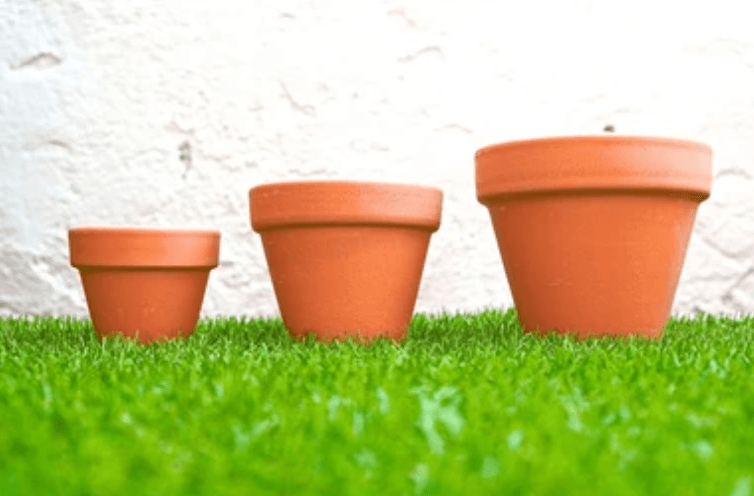
By considering these factors when choosing the right pot for your Euphorbia plant, you can help ensure that it has the best environment to thrive and add beauty to your indoor space.
Soil Mix for Euphorbia
Euphorbia plants thrive in well-draining soil that is slightly acidic and nutrient-rich. A good soil mix for Euphorbia can include a combination of potting soil, perlite, and coarse sand to ensure proper drainage and aeration for the roots. You can also add some peat moss to help retain moisture while still allowing excess water to drain away. It’s important to avoid using heavy or compacted soil that holds too much moisture, as this can lead to root rot and other issues. Additionally, it’s important to choose a pot that is the right size for your Euphorbia plant, allowing for room for the roots to grow and ensuring proper drainage. By selecting the right soil mix and pot, you can help your Euphorbia plant thrive and grow successfully.
Watering Techniques for Euphorbia
How Often to Water
Frequency based on the plant’s growth stage and season.
When it comes to choosing the right pot for your Euphorbia plant, it’s important to consider factors such as the plant’s growth stage and the season. The size of the pot should allow room for the roots to grow and provide proper drainage. Additionally, the soil mix should be well-draining, slightly acidic, and nutrient-rich to ensure the plant’s health. A good soil mix can include potting soil, perlite, coarse sand, and peat moss to provide proper aeration and drainage. This will help prevent issues such as root rot and ensure the plant’s success. When it comes to watering your Euphorbia, the frequency should be based on the plant’s growth stage and the season. During its active growing season, the plant may require more frequent watering, while in the dormant season, watering should be reduced. By considering these factors, you can create the best environment for your Euphorbia plant to thrive and add beauty to your indoor space.
Watering Methods
When it comes to watering your plants, it’s important to consider the size of the pot, the soil mix, and the plant’s growth stage. The size of the pot is important because it should allow room for the roots to grow and provide proper drainage. The soil mix should be well-draining, slightly acidic, and nutrient-rich to ensure the plant’s health. A good soil mix can include potting soil, perlite, coarse sand, and peat moss to provide proper aeration and drainage. This will help prevent issues such as root rot and ensure the plant’s success.
When it comes to watering frequency, it should be based on the plant’s growth stage and the season. During its active growing season, the plant may require more frequent watering, while in the dormant season, watering should be reduced. By considering these factors, you can create the best environment for your plants to thrive and add beauty to your indoor or outdoor space. It’s important to pay attention to the specific needs of each plant to ensure their health and success.
Fertilizing Your Euphorbia Plant
When and How to Fertilize
Best times of year to apply fertilizer.
When it comes to fertilizing your plants, the best times of year to apply fertilizer depend on the specific needs of the plant. In general, spring and early summer are good times to fertilize, as this is when plants are actively growing and can benefit from the extra nutrients. It’s important to use a fertilizer that is specifically formulated for the type of plant you are growing, as different plants have different nutrient needs. You should also follow the instructions on the fertilizer packaging to ensure that you are applying it correctly and at the right time. Additionally, it’s important to avoid over-fertilizing, as this can damage the plant and lead to nutrient imbalances in the soil. By paying attention to the specific needs of your plants and applying fertilizer at the right times of year, you can help them to thrive and grow strong and healthy.
Avoiding Over-Fertilization
Signs of nutrient burn and how to prevent it.
Nutrient burn can occur when plants are over-fertilized, leading to a buildup of excess nutrients in the soil. This can cause the leaves of the plant to turn yellow or brown, develop brown spots, or appear scorched. To prevent nutrient burn, it’s important to carefully follow the instructions on the fertilizer packaging and avoid applying more fertilizer than recommended. Additionally, it’s important to water the plants regularly to help flush out any excess nutrients from the soil. Using a well-balanced fertilizer and applying it at the right times of year can also help prevent nutrient burn and ensure that your plants receive the nutrients they need to thrive. By paying attention to the signs of nutrient burn and taking steps to prevent it, you can help your plants to grow strong and healthy.
Pruning and Maintenance Tips
Pruning Techniques
How to prune Euphorbia for shape and health.
When pruning Euphorbia, it’s important to avoid over-fertilization to prevent nutrient burn. Nutrient burn can occur when plants are over-fertilized, leading to a buildup of excess nutrients in the soil. This can cause the leaves of the plant to turn yellow or brown, develop brown spots, or appear scorched. To prevent nutrient burn, it’s important to carefully follow the instructions on the fertilizer packaging and avoid applying more fertilizer than recommended. Additionally, it’s important to water the plants regularly to help flush out any excess nutrients from the soil. Using a well-balanced fertilizer and applying it at the right times of year can also help prevent nutrient burn and ensure that your plants receive the nutrients they need to thrive.
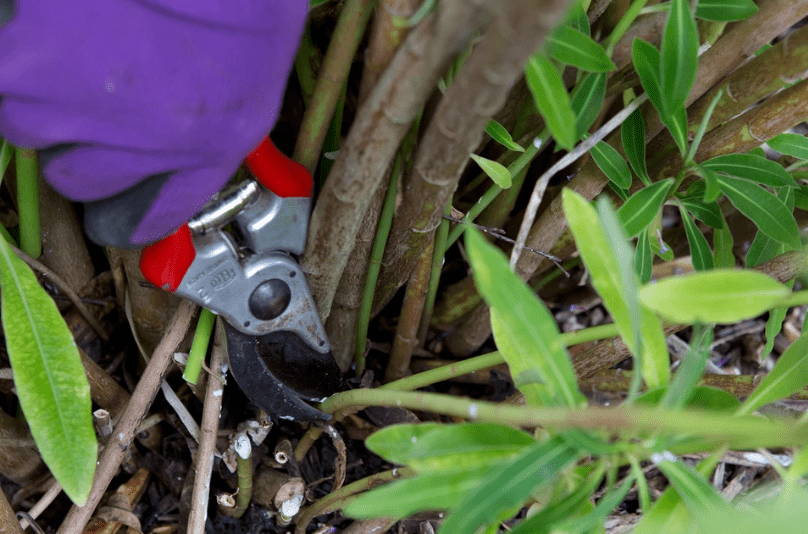
When it comes to pruning Euphorbia for shape and health, it’s important to use sharp, clean tools to make precise cuts. Remove any dead or diseased growth, and shape the plant to maintain its desired appearance. Euphorbia can be pruned in the early spring before new growth begins, or in the late summer to tidy up the plant. Be sure to wear gloves when pruning Euphorbia, as its milky sap can be irritating to the skin. By following these pruning and maintenance tips, you can help your Euphorbia plants to stay healthy and attractive.
Cleaning and Care
Regular cleaning of leaves to prevent dust buildup.
When it comes to maintaining the health and appearance of your plants, regular cleaning of leaves is important to prevent dust buildup. This can help the plants to properly absorb sunlight and nutrients, as well as prevent any potential pests or diseases from taking hold. Additionally, it’s important to water the plants regularly to help flush out any excess nutrients from the soil. Using a well-balanced fertilizer and applying it at the right times of year can also help prevent nutrient burn and ensure that your plants receive the nutrients they need to thrive. When it comes to pruning Euphorbia for shape and health, it’s important to use sharp, clean tools to make precise cuts. Remove any dead or diseased growth, and shape the plant to maintain its desired appearance. Euphorbia can be pruned in the early spring before new growth begins, or in the late summer to tidy up the plant. Be sure to wear gloves when pruning Euphorbia, as its milky sap can be irritating to the skin. By following these pruning and maintenance tips, you can help your Euphorbia plants to stay healthy and attractive.
Common Issues and Solutions
Pests and Diseases
Common pests that affect Euphorbia indoors and how to treat them.
There are several common pests that can affect Euphorbia plants when grown indoors. These include spider mites, mealybugs, and scale insects. To treat these pests, you can use insecticidal soap or neem oil. Be sure to thoroughly coat the plant and repeat the treatment as necessary to fully eliminate the pests. In addition, it’s important to keep an eye out for any signs of disease in your Euphorbia plants. Rot and fungal diseases can be a problem, especially if the plant is overwatered or if there is poor air circulation. To prevent these issues, make sure to water the plants sparingly and provide good air flow around the plant. Using a well-draining potting mix can also help prevent waterlogged soil and reduce the risk of root rot. By being proactive in addressing common pests and diseases, you can ensure that your Euphorbia plants stay healthy and vibrant.
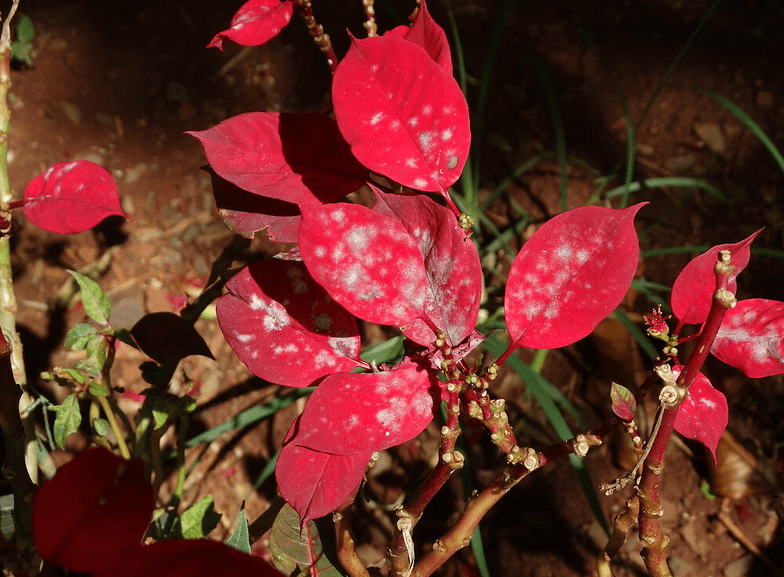
Troubleshooting Growth Problems
Addressing issues like yellowing leaves, slow growth, and leggy plants.
Yellowing leaves, slow growth, and leggy plants are common issues that gardeners may face when caring for Euphorbia plants. These issues can often be attributed to pests, such as spider mites or aphids. To treat these pests, you can use insecticidal soap or neem oil. Be sure to thoroughly coat the plant and repeat the treatment as necessary to fully eliminate the pests. In addition, it’s important to keep an eye out for any signs of disease in your Euphorbia plants. Rot and fungal diseases can be a problem, especially if the plant is overwatered or if there is poor air circulation. To prevent these issues, make sure to water the plants sparingly and provide good air flow around the plant. Using a well-draining potting mix can also help prevent waterlogged soil and reduce the risk of root rot. By being proactive in addressing common pests and diseases, you can ensure that your Euphorbia plants stay healthy and vibrant. Remember to always consult a professional or do research to properly care for your plants.
Propagating Euphorbia Indoors
Can be a rewarding and enjoyable experience. Euphorbia plants are relatively easy to propagate through stem cuttings. To do this, you will need to carefully cut a healthy stem from the parent plant, making sure to use a clean, sharp knife to avoid damaging the plant. Once you have the cutting, allow the cut end to dry and callus over for a few days before placing it in a well-draining potting mix. Keep the soil lightly moist and provide the cutting with bright, indirect light as it begins to root and grow. It’s important to keep in mind that Euphorbia plants contain a milky sap that can be irritating to the skin and toxic if ingested, so handle them with care and keep them away from children and pets. By following these guidelines, you can successfully propagate Euphorbia plants indoors and enjoy the beauty of these unique and fascinating plants in your home.
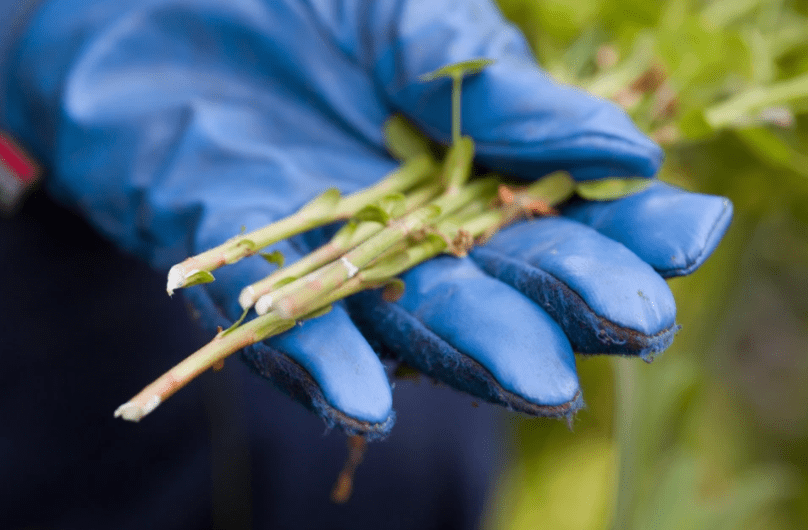
Conclusion
In conclusion, growing a thriving Euphorbia plant indoors requires attention to detail and proper care. It’s important to provide the right lighting, watering, and soil conditions to ensure the plant’s health and growth. With the right care and attention, you can enjoy a beautiful and thriving Euphorbia plant in your home. Remember to research and understand the specific needs of your Euphorbia plant to ensure its success.
Frequently asked questions And Answer
Euphorbia plants need bright, indirect light to thrive indoors. Place them near a south or west-facing window for the best results.
Water your Euphorbia plant sparingly, allowing the soil to dry out completely between waterings. Overwatering can lead to root rot.
Use a well-draining cactus or succulent potting mix for your Euphorbia plant. This will help prevent waterlogged soil and promote healthy root growth.
Euphorbia plants can benefit from a diluted, balanced fertilizer during the growing season (spring and summer). However, be cautious not to over-fertilize, as this can harm the plant.
To prevent your Euphorbia plant from becoming leggy, provide it with enough light and rotate it regularly to ensure even growth. You can also prune it to encourage a bushier, more compact shape.
Yes, Euphorbia plants contain a milky sap that can be toxic if ingested, so it’s important to keep them out of reach of pets and children.
Yes, Euphorbia plants can be propagated from stem cuttings. Allow the cut ends to callus over before planting them in well-draining soil.
Euphorbia plants prefer temperatures between 65-75°F (18-24°C) during the day and slightly cooler temperatures at night. Avoid exposing them to extreme cold or hot drafts.
